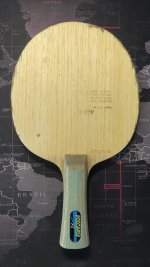Hello
I have 2 questions.
The first one is:
I buyed a new Dhs Long 5 W968 (national).
Just wanted to ask which glue is the best for protecting the wood (limba) the most from splinter?
It's a Yinhee Mercy 2 rubber on both sides.
I will sealed to. But only with a very thin layer. So I'm curious about the better glue option. If there is one.
I'm not playin in some ITTF tournaments so it's not important if it's illegal or something. I just want to protect my racket as good as possible.
The rubber would be on the blade for like one year. Maybe a little more or less (depends on how much I play).
The second question I have:
After how long should I repeat the sealing with the (very) thin layer?
Like I said I would let the rubber around 1year on the racket.
And I don't want to change the characteristics of the wood to much but want to protect it from splinter to.
Thanks for reading this & I hope you can help me.
Sorry if the question was discussed before. I read much here but it has very much information but not really what I wanted to know.
Or contradictions & stuff.. & sorry for my bad English.
Have a nice day!
I have 2 questions.
The first one is:
I buyed a new Dhs Long 5 W968 (national).
Just wanted to ask which glue is the best for protecting the wood (limba) the most from splinter?
It's a Yinhee Mercy 2 rubber on both sides.
I will sealed to. But only with a very thin layer. So I'm curious about the better glue option. If there is one.
I'm not playin in some ITTF tournaments so it's not important if it's illegal or something. I just want to protect my racket as good as possible.
The rubber would be on the blade for like one year. Maybe a little more or less (depends on how much I play).
The second question I have:
After how long should I repeat the sealing with the (very) thin layer?
Like I said I would let the rubber around 1year on the racket.
And I don't want to change the characteristics of the wood to much but want to protect it from splinter to.
Thanks for reading this & I hope you can help me.
Sorry if the question was discussed before. I read much here but it has very much information but not really what I wanted to know.
Or contradictions & stuff.. & sorry for my bad English.
Have a nice day!










